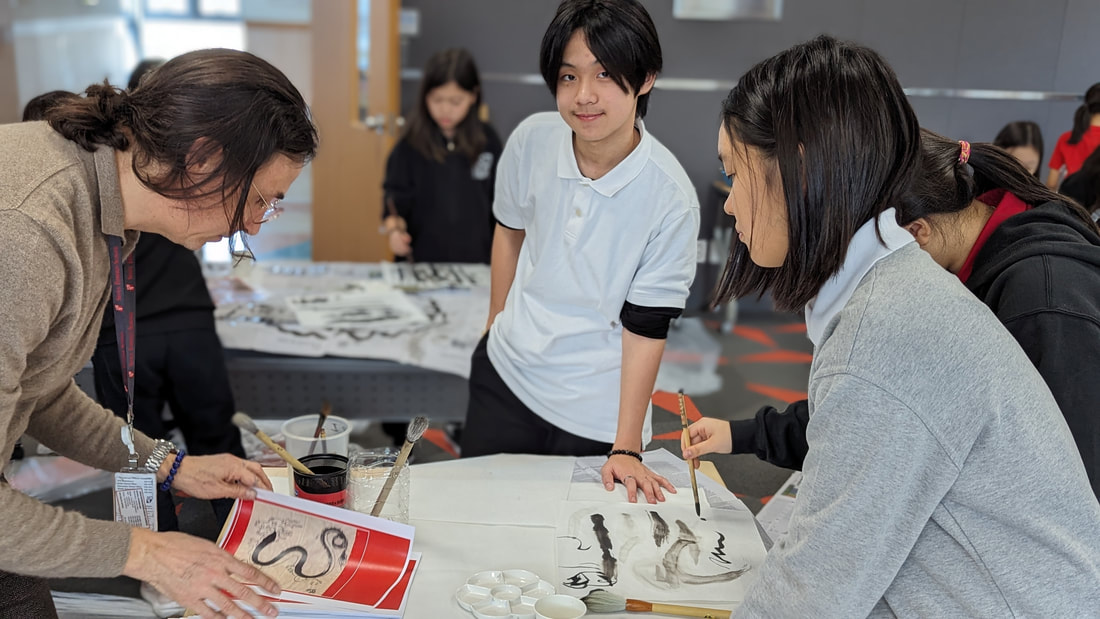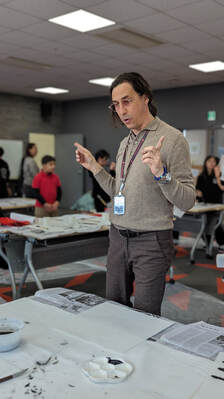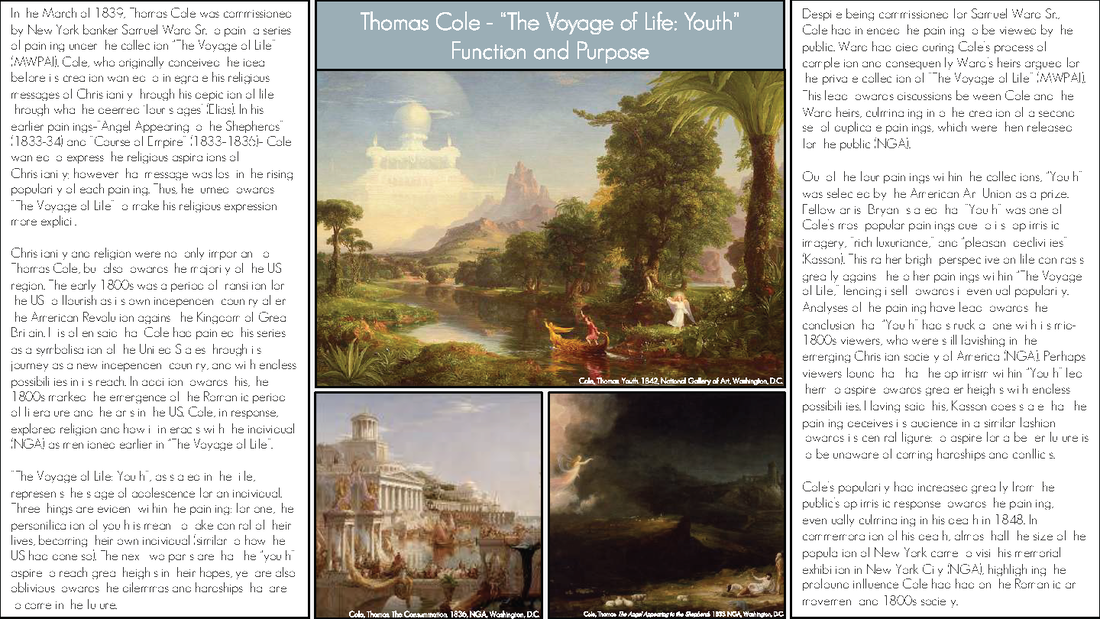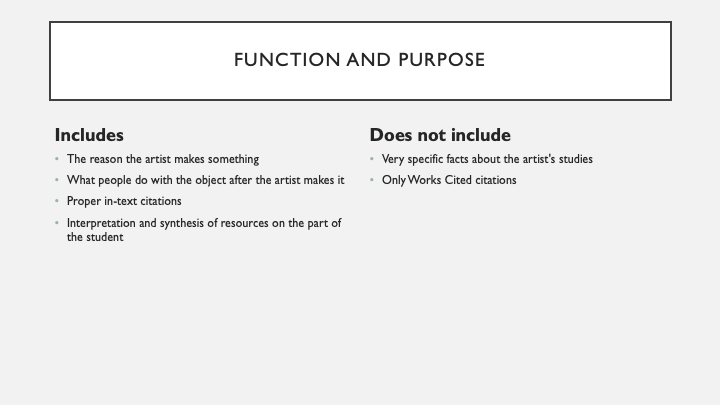In these pages you’ll find lessons around specific topics. These can cover one class, several, or even lay out the scope for cyclical learning. Where possible I have provided exemplars.
Chinese Calligraphy for Spring Festival
For Spring Festival (aka Lunar New Year or Chinese New Year) I revisited a lesson that I once did between my Art One class (grade nine) and our buddy class, Grade Two. Inn this case I had my eighth grade students working with me as teachers to lead a workshop with the Chinese second language learners. It differs from the buddy class in that I am in school in Korea now and this is more of a culture lesson. While we were in China there was more focus on the Social and Emotional Learning (SEL.) Below is the slide show I used to present and a couple photos. Feel free to use and don't forget to cite your source - Mr. Allen is Cool.
Concept Attainment Model for Fauvism and Symbolism
The concept attainment model is designed to create the opportunity for students to construct meaning about a topic. Here is one I developed for my eighth grade students about Fauvism and Symbolism. Show the students each slide indicating which states are true and false. In this case, what is and is not Fauvism and Symbolism. The students then use what they have seen and read and write a definition. Feel free to use as here or download the slide show to make your own. Don't forget to cite your source - Mr. Allen is Cool! For a deeper read, check out Joyce, Weil, and Calhoun's book Models of Teaching.
| fauvism_and_symbolism.pptx | |
| File Size: | 8774 kb |
| File Type: | pptx |
Function and Purpose IBDP Visual Arts
Function and Purpose is part of the current IBDP Visual Arts and one of the critical analysis required for the comparative study. I have found it can be somewhat confusing for students and mine often have very specific questions about what should be reported on, the extent they can draw conclusions (report what they think,) and how to format the screen. I address Function and Purpose three times throughout the school course. It gets a very superficial overview right at the beginning of the course as we are getting a feel for the work. Then again in more detail at the end of the first year, and then readdressed at the beginning of the second year.
Content Objective: I can understand the meaning of function and purpose and report on them.
Language Objective: I can use visual and verbal research to draw conclusions.
Culture Objective: I can find the function of an artwork in respect to its place and time.
Thinking skill questions:
Symbolic – How is the artist communicating through a visual experience?
Symbolic – What do aspects of a work of art tell us?
Salient: What information from my research is relevant in this situation?
Content Objective: I can understand the meaning of function and purpose and report on them.
Language Objective: I can use visual and verbal research to draw conclusions.
Culture Objective: I can find the function of an artwork in respect to its place and time.
Thinking skill questions:
Symbolic – How is the artist communicating through a visual experience?
Symbolic – What do aspects of a work of art tell us?
Salient: What information from my research is relevant in this situation?
In the first and second session (months apart) I give the students and overview of function and purpose and provide examples of each from the Visual Arts Guide. The students then take individual functions and purposes printed on strips of paper and lay them on posters of well-known art along with a post-its defending their the placement. We do a gallery walk and discuss.
I use the Concept Attainment Model in sessions two and three (also months apart.). I use the same statement because there is a lot of information students have to deal with and using the same statement hopefully calls it up from their long-term memory. In session three I ask the to verbalize a definition of function and purpose and then reveal the IBDP description.



